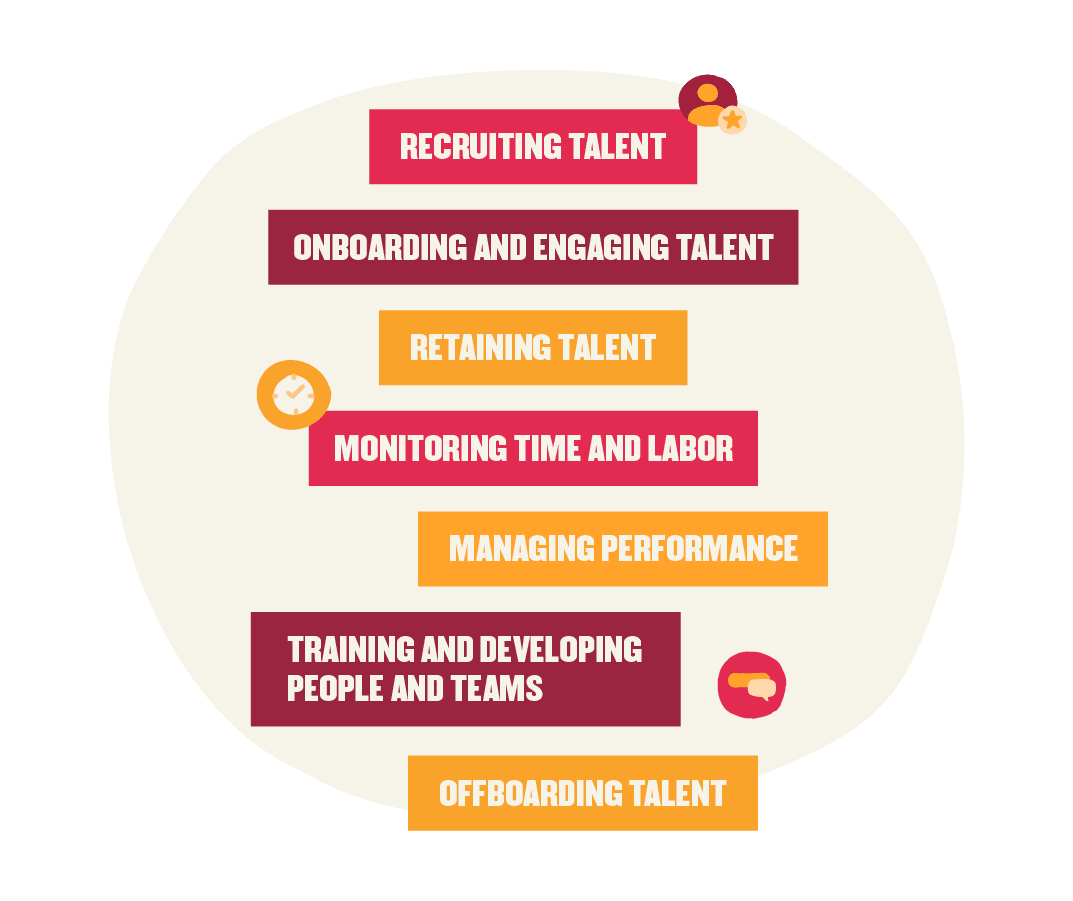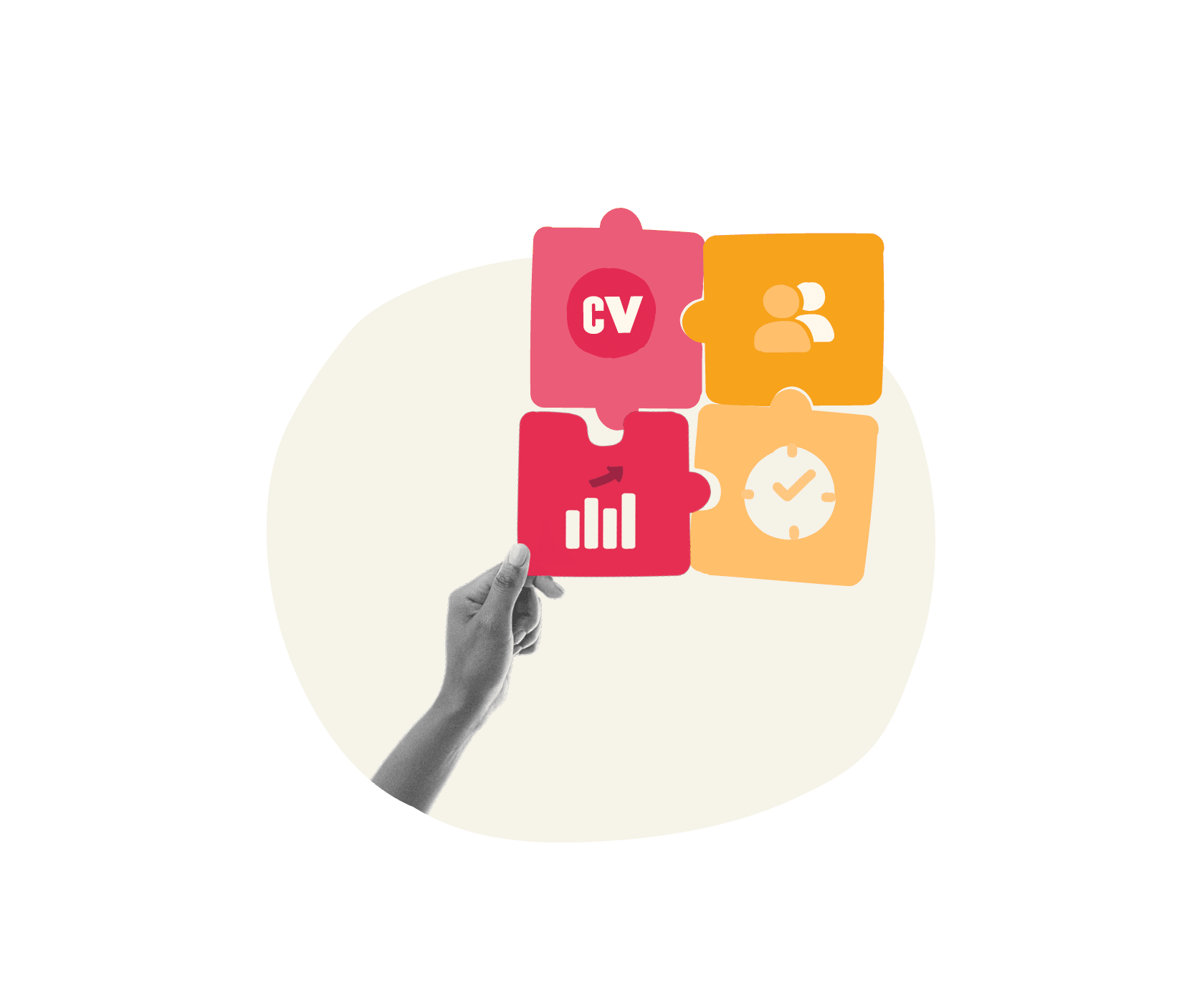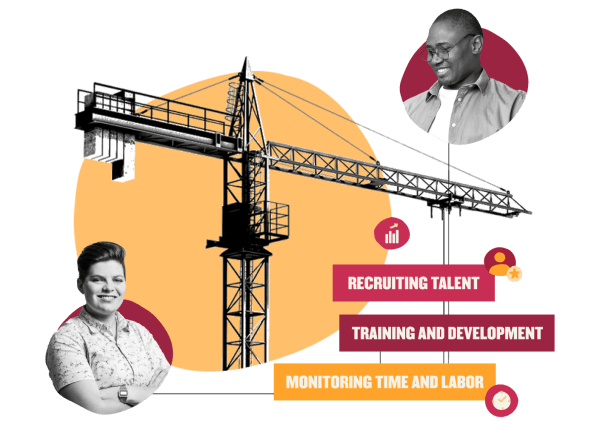Introduction
Managers and HR professionals are all adjusting to extreme workplace changes that stem from the results of the pandemic and the Great Resignation. In the face of this evolving future of work, it’s time for these two roles to tap into the power of collaboration and partnership.
True partnerships between HR and managers can improve employee engagement and streamline processes for productive outcomes. It’s a powerful cycle—a partnership between HR and managers will ultimately empower and enable people to move organizations forward. The HR team and department managers interact in numerous ways.
Rather than being buddies, the HR and manager relationship has historically been fraught with tension. Managers perceive HR as the team that makes them fill out forms, follow rules, and jump through hoops. They may see HR as a gatekeeper watching their every move. In the past, HR professionals may not have grasped the pressures facing managers, fully understood their company’s business model, or been conversant in key financial metrics that matter to the managers they support.
Similarly, HR may have seen managers as the people who were slow regarding candidate interviews, performance assessments, employee feedback, and compensation reviews. If managers didn’t take the necessary time to develop or engage their people, their lack of action only created more work for HR in the form of providing extra employee support or addressing behavior issues.
During this time of epic change, McKinsey recommends that rather than holding the HR reins tightly, it’s time for HR to shift responsibility for traditional HR tasks to line managers.
According to McKinsey, “Giving line managers decision power and responsibility for processes such as recruiting and performance appraisals makes sense operationally and frees the HR function to take more of a leadership role within the organization by being more strategic and undertaking work that adds greater value.”
In short: These two groups may have built walls between each other in the past. But, the modern workplace evolution makes now the perfect time to pull back the curtain of Oz between HR and managers. It’s time to build mutually beneficial relationships between your HR teams and managers. The best relationships are motivated by partnership rather than compliance. They start with aligning on shared goals, clear responsibilities, and actionable data.
Shared goals
Every organization needs shared goals. As the people who work most closely with people, goals for HR and managers are directly related. Consider all the ways these two roles interact.

For each of these interactions, there’s a goal—onboarding in a way that retains talent, monitoring time to reduce overtime and labor costs, and managing performance to ensure appropriate pay is in place. Establishing and meeting shared goals in these areas improves outcomes for HR and managers, and the entire business.
How to establish shared goals
Research conducted by HiBob and Fiverr revealed that HR leaders and hiring managers see eye-to-eye on many goals, including the impact of turnover on an organization. Fifty-eight percent of HR leaders and hiring managers feel turnover affects team productivity. Using the example of turnover, let’s dig into how to approach a shared goal around reducing turnover for HR and managers.

1. Emphasize shared intent
A better people experience means a better bottom line. McKinsey research has shown that “organizations in which HR facilitates a positive employee experience are 1.3 times more likely to report organizational outperformance.”
HR and managers have a shared responsibility and intent to create this type of people experience. They must work together and strive to create motivating employee experiences that strengthen individual, team, and company performance.
2. Define the unique benefits
In addition to shared intent, there are unique benefits for HR and managers when it comes to reducing turnover. For example, in our research with Fiverr, we found that productivity losses resulting from turnover have more impact on hiring managers. Similarly, the increased workload of attracting and recruiting has a huge impact on HR’s workload.
3. Create trust
In the example of a shared goal to reduce turnover, if there’s trust between managers and HR, they can work together to proactively address issues, such as employee development or performance that cause turnover. By doing so, they’re more likely to eliminate turnover issues before they’ve happened.
“To achieve your HR strategies, start by building a culture of trust on your HR team and throughout your organization,” says Nirit Peled-Munz, chief people officer of HiBob. “If people feel trusted and safe, they’ll do more and achieve more. A culture of trust allows people to give feedback and voice their concerns. It also inspires discussions that lead to better teamwork, culture, and organizational productivity.”
If managers see HR as the gatekeepers or enforcers around a goal, or if HR views managers as the people who create more work, achieving goals becomes much more difficult. It’s essential to emphasize shared intent, define the unique benefits, and create trust so these groups can face challenges together.

Clear responsibilities
To understand—and appreciate—one another’s perspective, HR and managers need to have clarity around their unique responsibilities and mutual expectations. This requires that each recognizes and appreciates the value the other brings. That type of understanding doesn’t happen overnight. It evolves out of a strong foundation.
HR and managers should work to define and delineate their responsibilities in the key areas of people processes and programs. Each organization will need to determine how HR and managers delineate their responsibilities.
The shared responsibilities of HR and managers

The relationship between HR and managers needs to be ongoing, not reserved for issues or difficult conversations. In addition to clear responsibilities, a strong partnership requires regular check-ins. It’s easier to have tough conversations if people consistently communicate with each other.
Leadership influence and support are absolutely necessary for this relationship to succeed. Leaders can’t blame either party or put them on opposing sides. Instead, leaders should model how well the CEO works with the CHRO and COO at the executive level. Ideally, the responsibilities these executives hold should flow through to the levels beneath them—where the operations manager is partnering with the HR manager, just as the COO and CHRO define their responsibilities and work together to achieve their goals.
Actionable systems and data
Finally, at the center of this successful partnership is the right technology to enable HR and managers to do their jobs effectively. Technology can help people in these roles share ownership, control, and accountability for the company’s people management strategies and outcomes.
“HR leaders and other managers desperately need these systems [HRIS] for other things,” says Josh Bersin. “They store the company organization structure, they tell you who is coming to work when, they track time and attendance, and they automate things like performance management, coaching, onboarding, development, and all sorts of social interactions between people.”
Thanks to technology, HR can transition from spending too much time on daily details to making more strategic contributions while ensuring that programs and processes are consistently delivered.
At the same time, with a modern HRIS, managers have access to the information and data they need about new hires, people, and their entire team. Rather than relying on HR to give them information, they have the data they need to be the most effective managers they can be.
HR tech that helps managers
In the past, HR may have kept compensation behind the curtain—for fear that information could get into the “wrong hands.” But that’s no longer a sustainable approach, especially in fast-growing organizations. This is an area where HR can share responsibility with managers while ensuring confidentiality and privacy. For example, HiBob’s compensation module enables HR teams to empower managers to manage the process and make decisions in line with the core philosophies of compensation management. The process is automated while also providing a sense of ownership for the manager and relieving HR of unnecessary tasks.
Another area where HR can use technology to support managers and team members is by implementing a platform that helps manage one-on-one meetings. In Bob, both managers and their team members can contribute to planning meetings—by writing agendas, preparing action items, and capturing notes. Bob also stores an archive of past meetings for quick and easy future reference.
Finally, a modern HR tech also empowers managers and HR to work together. Surveys, reports, and tools like Bob’s attrition indicator provide the people analytics both teams need to gather insights and determine strategies and next steps. Rather than asking a manager how their team is performing, an HR professional can come to a meeting with data and performance highlights that serve as a starting point for valuable discussion. Likewise, a manager can review team data on their own to evaluate where they could most benefit from HR’s support.
The bottom line: The knowledge gleaned from modern HR tech about people impacts entire organizational structures and strategies. Managers and HR alike can benefit from this knowledge.

Recommended For Further Reading
Conclusion
Organizational agility starts with better partnerships between managers and HR. Transparency and trust between these roles are essential to improve employee productivity and satisfaction. When organizations pull back the curtain between managers and HR, they can shift from a traditional hierarchical model to a more modern organizational structure that enables and empowers people to achieve their mission.
According to McKinsey, refining HR requires “[e]mpowering line managers to take over people leadership tasks independently, since this is one of the most important leadership responsibilities.” “Crucial human-capital tasks such as recruiting and performance appraisals shouldn’t be ‘outsourced’ to HR but championed by line managers, with HR providing tools and coaching.”
Indeed, a strong relationship built on collaboration between the HR team and managers—with the right tools and systems to support this collaboration—will create employee experiences that retain talent and drive company progress.
Meet Bob
We know how important it is to provide managers and HR teams with what they need to make decisions about your people, especially in light of today’s modern workplace changes. That’s why we built Bob, an employee experience platform that provides valuable and personalized insights to grow your company’s relationships, productivity, and retention.
Bob harnesses the powerful combination of data and human factors to give HR professionals and managers access to the understanding they need to make better decisions. In a short time, Bob can be deployed to enable communication, collaboration, and connectivity that drives stronger engagement, productivity, and business outcomes.
For HR, it automates many common processes, allows greater oversight and visibility of the business, and centralizes all people data in a secure, user-friendly environment.
For managers, it provides access to data and insights to help them lead more effectively and streamline processes.
For employees, it’s the tools and information they need to connect, develop, and grow throughout their journey.
